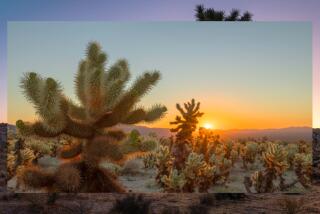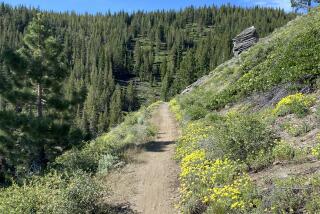A Wet Walk, A Wild Ride
My father and I, in Panama for a week during Thanksgiving last year, decided to make the ascent of Volcán Barú part of our itinerary. It seemed like a snap, given our more strenuous previous excursions: hiking the Inca Trail over four days in Peru in 2004 and scaling peaks exceeding 16,000 feet in Ecuador in 2005.
Wrong.
Various guidebooks offer differing accounts of how challenging the hike up Volcán Barú is supposed to be. At 28 kilometers round-trip (more than 17 miles), the hike is plenty long, whether you decide it’s a straightforward one-day walk-up or a trek best spread over two days. The idea, all the books say, is to the reach the summit at dawn, when it’s usually still clear enough for climbers to see the Pacific Ocean to the south and the Caribbean Sea to the north. We first consider the two-day hike but opt at the last minute to avoid camping by doing the whole thing in one day with a local guide supplied by Panama Pete Adventures in Panama City (company motto: “No tours, just adventures”).
Completing the hike in one day usually requires leaving Boquete at 2 a.m. We are unable to move up our pre-arranged start time, so we meet our guide outside our lodgings, Hotel Fundadores, at 6:15. We pile into an overloaded white Mitsubishi Montero - stuffed with the driver, a tour company employee, the guide, the guide’s “assistant,” another guy hitching a ride and us - for the drive from Fundadores to the ranger station at the foot of Volcán Barú. It’s sunny and rapidly warming when we start up the rocky path at 7:15.
The hike is immediately grueling, thanks in large part to the humidity. Our roguish guide, Eduardo Miranda, is out of shape (later, after informing us that this is his first ascent of Volcán Barú in five years, he tells me his hobbies include “mujeres, fumando y cerveza” - women, smoking and beer), and we pause frequently to catch our breath during the first portion.
The path goes on and on, and parts are quite steep. Wooden signs inform us of our progress, though they soon start to seem like taunts as we huff our way slowly toward la cima, the top: “9 km a la cima,” or “4.5 km a la cima.” We trudge along, pausing now and then to eat fresh raspberries off the vine or to admire the view. Soon, though, clouds begin rolling in from the west, and they are ominously dark.
Rain And Rum
When we’re “2 km a la cima,” it starts to rain. This is a bad sign, given the deep, muddy ruts we’ve been seeing, but we’re getting close to the top. So we don rain gear and hunker in brush by the side of the path. Eduardo smokes a cigarette while we wait for the rain to subside.
After a few minutes, the rain tapers to a chilly drizzle, and we continue on to the “base camp,” where we would have spent the night. It’s a flat area, marked by a dilapidated open-walled hut missing part of the floor, and by a large mound of garbage scattered near a perfectly serviceable trash barrel. It’s 11 a.m., and suddenly our decision not to spend the night - and all of this afternoon - seems inspired, despite the rain.
Finally, after another steep, torturous stretch, we reach the top, but there are no oceans in sight. In fact, we are enveloped in fog, and the only water we see is falling on us from above as we wander gingerly around the murky summit, which is growing steadily colder.
The top of Volcán Barú is anything but pristine. Its altitude makes it an ideal transmission point for television and cellular phone signals, and a large flat area just shy of the summit hosts a small forest of towering antennas looming over squat concrete bunkers housing equipment and the engineers that maintain it.
The prospect of hiking back down the steep, muddy path is not pleasant, and Eduardo happily obliges us with a diversion: He knows one of the engineers working atop the mountain, and soon we are seated in the makeshift kitchen in a bunker as the engineer, Froilan Miranda (no relation), boils water for coffee.
We gratefully gulp it down, shivering in our wet gear as the temperature drops, and carry on a conversation as best we can with our broken Spanish and their broken English, in between peeks at a soccer game on a little TV in the tiny bunkroom next to the kitchen. Before long, Froilan produces a bottle of harsh Panamanian rum, which Eduardo tipples with gusto and passes around to the rest of us.
We’re sitting on top of a dormant volcano, in pouring rain, drinking rum with complete strangers. Now that’s adventure.
A Rocky Road
It soon emerges that two technicians repairing equipment on the mountain are heading down soon, in a pickup truck. Eduardo secures us a ride, which sounds brilliant until the truck pulls up around 4 p.m.
It’s a double-cab pickup, which means we all ought to fit. We don’t. There’s room for just one, in a back seat largely taken up by two huge boxes of electronic components that can’t get wet. My father is twice my age, so it only seems fair that he rides in the cab.
That leaves Eduardo and me to hunker down in the bed, wedged in precariously with a bag or two of trash, a box of salvaged copper wire, coils of thick rope, a pickax and various bits of machinery. Leaning up against the back of the cab isn’t much of an option: There’s a convex satellite dish strapped upright to it. Eduardo has scrounged a filthy tarp, which we pull over ourselves as we brace against the frame of the truck for the ride down.
And what a ride. The truck makes slow progress, bouncing jarringly over rocks and into tire ruts. Every jolt sends shock waves up my spine, and my head is positioned disturbingly close to the dirt-encrusted blade of the pickax. The one benefit of crouching under the tarp is that we can’t actually see the makeshift road to which the truck clings. My father later tells me the view from the cab was harrowing.
After 40 minutes and only 4½ kilometers, we stop, but only because the pickup has become stuck in a deepening morass of mud. Rain teems down, the light is starting to fade, and we still have 9 kilometers to go.
Eduardo and I hop out of the bed as the driver attempts to gun it through the muck. No dice. Next, he and Eduardo take machetes and hack away at the brush by the road and stuff the branches under the tires in the hope of building traction. This doesn’t work, either.
Attempts to dig out the pickup, or to pry it out with a log, also prove unsuccessful, and the torrential rain isn’t making things any easier. The truck is outfitted with a winch on the front bumper, and finally, after two failed attempts to pull the pickup out with the winch, an opposite-angle approach works, and the truck is free.
The Journey’s End
Each of us resumes his place - Dad in the cab with the TV technicians, Eduardo and I in the bed - and the truck continues swaying and lurching its way down the mountain. Eduardo and I are tossed from side to side, groaning and uttering oaths in Spanish and English. There are moments when it hardly seems far-fetched to think I could be thrown from the truck and end up stranded in deep underbrush, in the rain, in the dark, on the mountain. Yet I hear myself laughing between curses. Eduardo seems less fazed: He smokes the occasional cigarette and even answers his cellphone.
We finally reach the ranger station around 8 p.m., and Dad, Eduardo and I transfer to the waiting Montero for the ride back to Hotel Fundadores, dinner and a much-needed shower.
It took us five hours to reach the summit, and nearly as long to get back down.
We saw plenty during the rest of our stay in Panama, including Spanish colonial ruins in Panama City and a portion of the Panama Canal, which is truly a marvel of engineering.
Those were only tours, though. We had already completed the adventure.
Contact Eric R. Danton at edanton@courant.com.
More to Read
Sign up for The Wild
We’ll help you find the best places to hike, bike and run, as well as the perfect silent spots for meditation and yoga.
You may occasionally receive promotional content from the Los Angeles Times.






